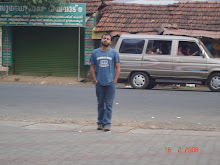Some facts and figures:
Grand Total Installed Capacity of India is 150,000 MW (aaprox)
Break Up
Thermal 65% (Coal Based 55%, Gas Based 10%, Oil Based 1%)
Hydro 25%, Nuclear 3%, Renewable Power 7%
Per Capita Consumption, India = 612 KWH/Year
World Average = 2500 KWH/Year
Jharkhand, Bihar, Uttar Pradesh, Orissa, Uttranchal, West Bengal etc are some of the states where significant number (more than 10%) of villages are yet to be electrified.
Villages Electrified (30 May 2006) - 488,173
Village level Electrification % - 82.2%
The Government of India has an ambitious mission of POWER FOR ALL BY 2012. This mission would require that our installed generation capacity should be at least 200,000 MW by 2012 from the present level of 150,000 MW.
And incase we go by World Average we would be requiring atleast 4 times the capacity i.e. 600,000 MW. In nutshell there’s huge demand of Energy in future.
Do we need Nuclear Power Plants ?
We have 55% Thermal Power Plants. Consumption of Coal in India is
 We have coal reserves of
We have coal reserves ofCoal Reserve(1/1/2007 data), www.coalindia.gov.in/coalreserve.htm
Proved Reserve 115 Billion tonn
Indicated 132 Billion tonn
Total Reserves 287 Billion tonn
Considering 300,000 MW production and all new units being Coal based Thermal Power Plant. We have enough fuel for 220 Years.
So there’s no emergency if seen in terms of scarcity and expansion program.
If seen on a scale of cost/unit and time scale. The third generation power plants have reduced both enormously. Eg: The General Electric ABWR was the first third generation power plant approved. The first two ABWR's were commissioned in Japan in 1996 and 1997. These took just over 3 years to construct and were completed on budget. Their construction costs were around $2000 per KW. Or $2 Billion per 1000 MW. Westinghouse claims its Advanced PWR reactor, the AP1000, will cost USD $1400 per KW for the first reactor and fall to USD $1000 per KW for subsequent reactors. In US the cost has reduced from 3.63 cents per KWHr to 1.68 cents per KWHr in 2004.
Taking conservative estimate of $2 Billion, we get cost/unit in cents at rates as shown in table below:
 Assuming a financing cost of 8%, it would cost Rs 2.96/Unit. And incase cost comes down to $1000 per KW, it would be Rs 1.48/Unit which is quite economical. Assuming we also go for long term contracts for Uranium.
Assuming a financing cost of 8%, it would cost Rs 2.96/Unit. And incase cost comes down to $1000 per KW, it would be Rs 1.48/Unit which is quite economical. Assuming we also go for long term contracts for Uranium.So cost/unit might give you an advantage in long run. But it would be huge. I am not including Uranium reserves but would add them soon in the blog and then come to some conclusion.

1 comment:
Dear Friend,
I visited your blog and went through your posts. I am a Mass Communication and Journalism student under the University of Calicut. As you may know, we have to submit a dissertation work to the University for the Completion of our Post Graduation study.
For the particular study I have chosen BLOGGING as my subject, precisely saying “Efficacy of BLOGGING as a Tool for Communication”. It is a profound study on the efficacy and usefulness of BLOGGING among Keralites based on a survey among the bloggers of Calicut.
For this purpose, I have had a sample of active bloggers in and around Calicut, which includes you as one. Here, I kindly request you to spare a few moments for me taking part in this survey sincerely.
Follow the link below to enter the survey .
http://www.polldaddy.com/s/C752E291A40F94E7/
Yours faithfully
Abdul Vahid .V
Manjeri
Malappuram
Ph: 9746016123
Email – abdulvahidvv@gmail.com
Post a Comment